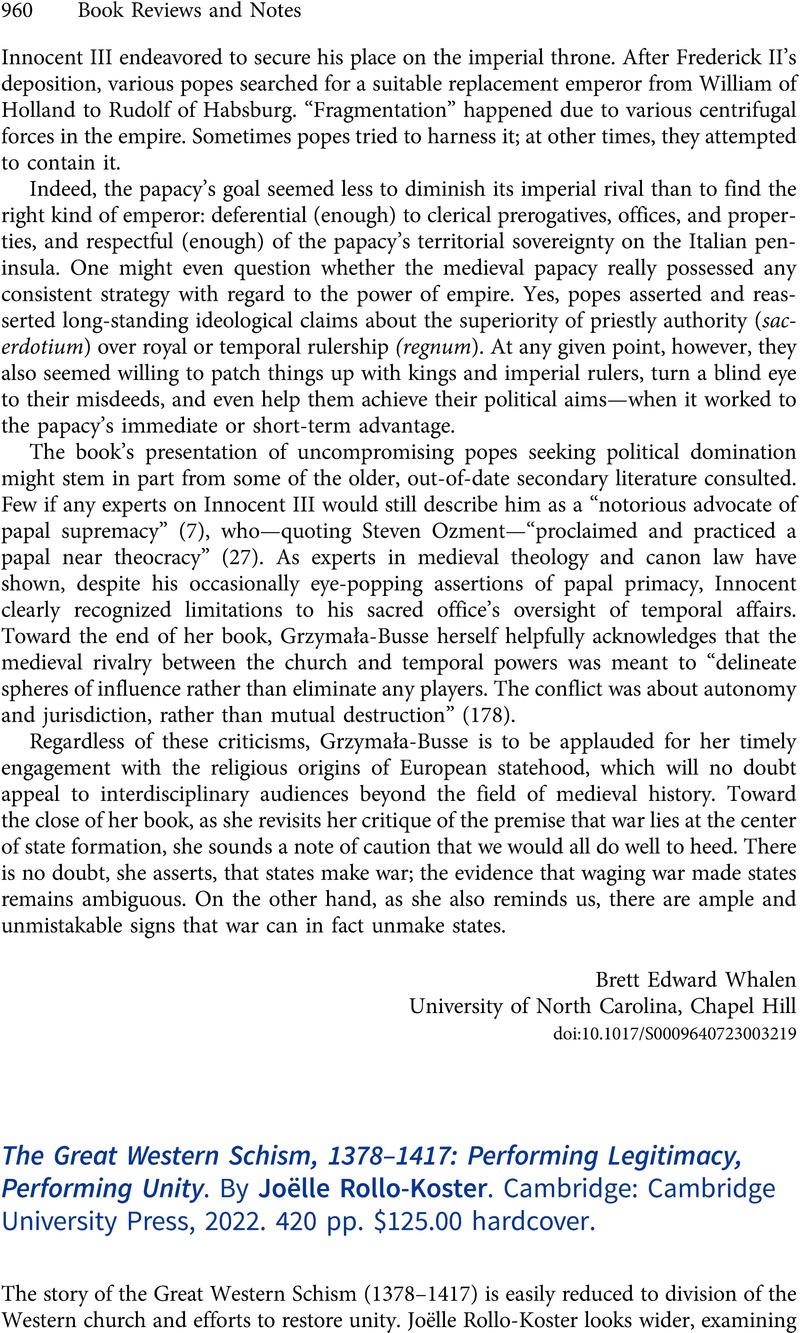No CrossRef data available.
Article contents
The Great Western Schism, 1378–1417: Performing Legitimacy, Performing Unity. By Joëlle Rollo-Koster. Cambridge: Cambridge University Press, 2022. 420 pp. $125.00 hardcover.
Review products
The Great Western Schism, 1378–1417: Performing Legitimacy, Performing Unity. By Joëlle Rollo-Koster. Cambridge: Cambridge University Press, 2022. 420 pp. $125.00 hardcover.
Published online by Cambridge University Press: 19 March 2024
Abstract
An abstract is not available for this content so a preview has been provided. Please use the Get access link above for information on how to access this content.

- Type
- Book Reviews and Notes
- Information
- Copyright
- Copyright © The Author(s), 2024. Published by Cambridge University Press on behalf of American Society of Church History


